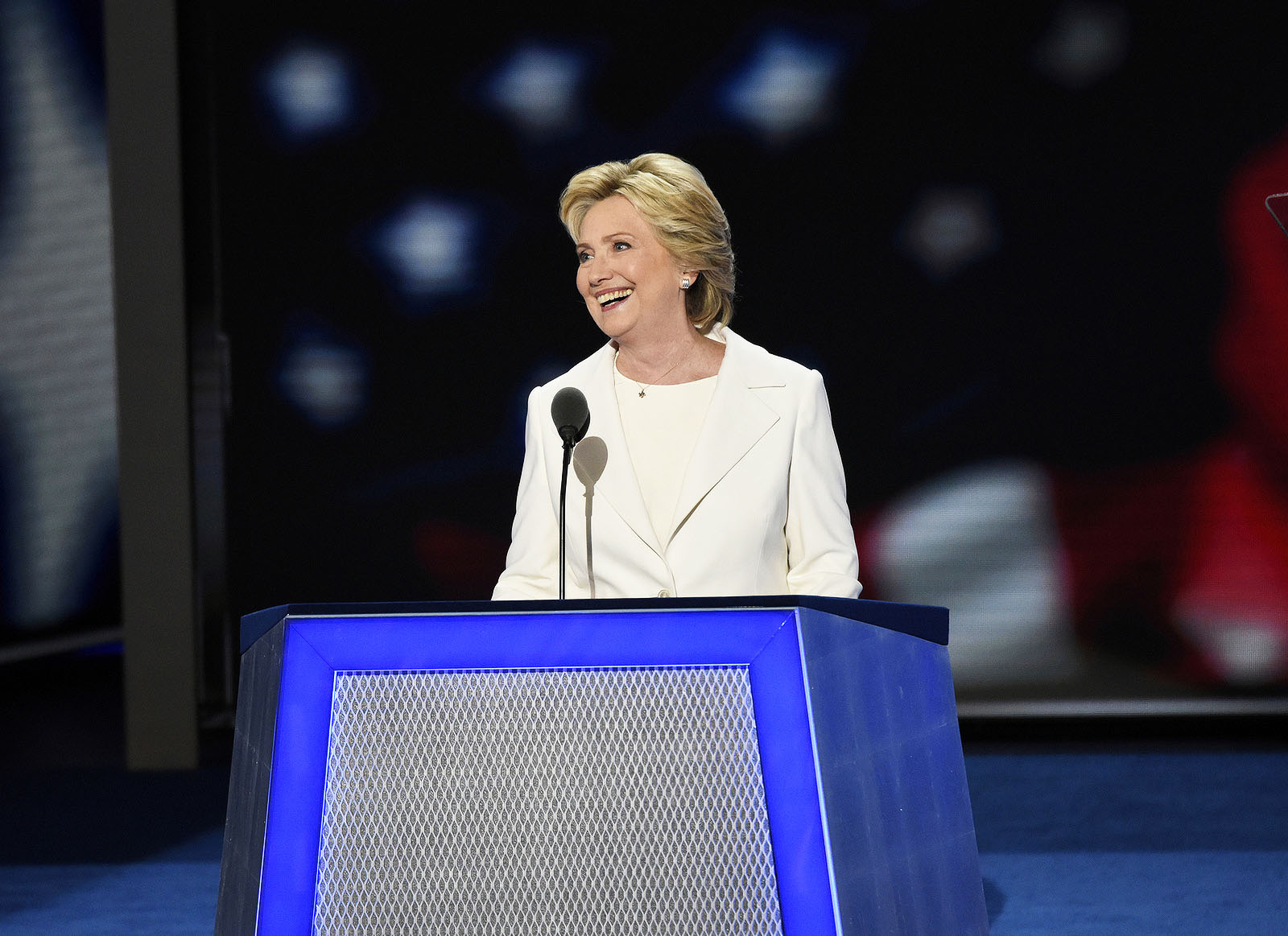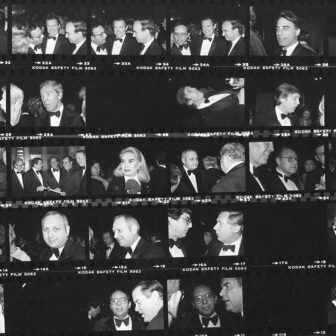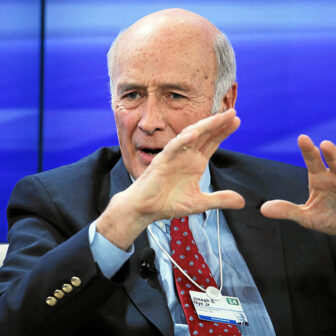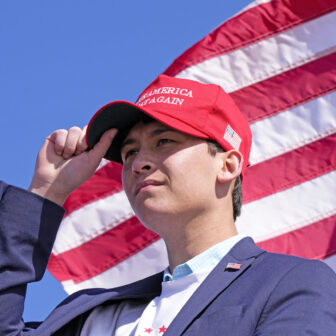The US presidential election campaign is a flurry of conspiracy theories, most of them without foundation. But one theory has received surprisingly little attention despite its having more evidential support than most. This is the theory that Donald Trump is not really interested in winning the presidency – that perhaps he is actually looking to throw the election – and it has come from both the left and the right of politics.
The most elaborate version proposes that Trump is using his campaign not to become president but to generate publicity and support for a new right-wing media conglomerate in partnership with his campaign advisers Stephen Bannon from Breitbart News and Roger Ailes from Fox News. The plan may even involve his running mate Mike Pence, who, before he was governor of Indiana, was a talk-radio host who described himself as “Rush Limbaugh on decaf.”
It’s worth exploring this notion because, if true, it has huge ramifications for the electoral process, for Trump’s ardent supporters, for the United States – and for Trump’s business future and the shape of the American media landscape.
It’s no surprise that someone with Trump’s outsized ego and penchant for self-promotion finds running for president attractive. And his commitment to running for president is hardly in doubt – he has flirted with the idea for more than twenty years. But there is little evidence that he has given any substantive thought to the policy and political challenges, the hard work and the difficult decisions he would face if he were successful. The goals have consistently been short-term; no definitive political or policy agenda exists beyond winning; and many opportunities to win big have been deliberately foregone. Small wonder that this conspiracy theory has emerged.
Most people need to be reminded that Donald Trump’s first attempt to run for president began in October 1999 when he (typically) announced the creation of a presidential exploratory committee, headed by lobbyist Roger Stone, on CNN’s Larry King Live. He had previously toyed with running as a Republican in 1988, but in 1999 he renounced his party membership and, encouraged by Minnesota governor Jesse Ventura, began an extended flirtation with Ross Perot’s Reform Party. The attempt ended early (it was announced on The Today Show in February 2000) and critics speculated that it had been a tactic to strengthen his brand and sell more books.
In the following years Trump launched his television series The Apprentice and two books, How to Get Rich and Think Like a Billionaire. These, and the bankruptcy of Trump Entertainment Resorts, presumably diverted his attention from the presidential election in 2004, although he did say he was “very seriously” considering a bid.
Trump has changed his voter alignment often. In August 2001 he switched his registration to Democrat. “In many cases, I probably identify more as Democrat,” Trump told CNN’s Wolf Blitzer in a 2004 interview. “It just seems that the economy does better under the Democrats than the Republicans.” He returned to the Republican Party in September 2009, only to leave again in December 2011 and remained unregistered with any party for a short period. That changed again in April 2012 when he re-registered as a Republican.
In 2011 Trump again went through the motions of exploring a presidential candidacy, perhaps seduced by a March 2011 WSJ/NBC Newspoll that showed him as a strong contender in a nine-candidate field. At this time he infamously and repeatedly raised the “birther” issue, questioning whether Barack Obama was born in the United States and calling on the president to release his full birth certificate. This backfired when Obama not only made his birth certificate public but also humiliated Trump in a series of jokes at his expense at the White House correspondents’ dinner. Shortly thereafter, in May 2011, Trump formally announced he would not be seeking the Republican nomination, claiming he was not ready to leave the private sector. He later endorsed Mitt Romney.
There are indications that Romney’s resounding loss drove Trump to immediately begin planning a White House bid for 2016. He trademarked his “Make America Great Again” slogan in November 2012 and was an active donor to Republican causes and candidates. He may have been goaded further by an unflattering BuzzFeed profile in 2014, which argued that Trump perennially faked interest in a presidential run to assuage his massive insecurities and feed his equally massive ego. That ego would certainly have persuaded him that he was capable of winning against more experienced, more conservative and better-funded candidates like Jeb Bush; and given his gambling proclivities, he may have realised that a large and disparate field of candidates improved his chances.
During the primaries, Trump quickly figured out how to win over those who are now his core voters and how to dominate the media, leaving other candidates floundering, the GOP establishment shell-shocked, and much of the electorate dumbfounded. This domination of the Republican primaries by a man who was willing to overturn all the rules of political engagement and who wasn’t a conventional Republican, or even a conservative, led to an ironic twist to conspiracy theories, with some now claiming that Donald Trump was in fact a false flag candidate whose mission was to see Hillary Clinton elected as president.
It is quite possible that Trump himself was surprised at the ease with which he emerged as the Republican nominee, even as he made threats about what he would do if that didn’t come about. But even Trump hubris can’t account for his failure to capitalise on his party’s convention and to prepare for the general election ahead. Clinton is a formidable candidate in terms of both her experience and her campaign organisation; no one intent on winning would ignore that fact and rely solely on her negatives to ensure his victory.
Advisers and GOP leaders who once hoped that Trump would transform from a crudely effective political showman into a candidate with a presidential demeanour now concede that is not going to happen. Indeed, he seems still to be operating with the mindset he had during the primaries, unable to modify his language and his policies to reach out beyond his base. This was exemplified in his recent immigration speech.
On 31 August, after seeming to change direction on immigration policy and immediately following a grandstanding trip to Mexico, Trump delivered a much-hyped speech on immigration that turned back to his original, hardline plans and continued to frame immigration as an issue about crime, safety and terrorism. The speech was so shocking and incendiary that it led several members of his Hispanic advisory council to quit. It seemed as though Trump was deliberately throwing away any chance of attracting the Hispanic vote; a subsequent poll shows that he is now losing to Clinton among those voters by fifty-one points.
Similarly, he has consistently offended African Americans, the families of Iraq war veterans, and women. When he does turn, belatedly, to outreach efforts such as those to African-American voters, they are so poorly delivered that they have the opposite effect, driving these voters away. It’s hard to believe that an astute businessman can’t do the sums to realise that minority and independent votes will be the key to winning in November.
Which brings us to the present state of the campaign. Labor Day has just gone by and this traditionally marks a turning point in presidential campaigns; as summer turns to fall, so voters’ attention finally turns to politics, the debates and the decisions they will make on election day.
Trump is hugely disadvantaged in the political ground game. A recent report from PBS NewsHour found that in fifteen key states Clinton had three times more campaign offices (291) than Trump and the Republican National Committee combined (eighty-eight). In several make-or-break states, Trump barely had a presence, with just two offices in Pennsylvania and only one each in North Carolina and Florida. Clinton has one hundred offices in these states.
Trump operatives respond to this by saying that there are more offices to come and dismissing the Clinton campaign’s reliance on the same data-driven, on-the-ground efforts that won two elections for Obama. But early voting, which starts in some states on 23 September, will limit the time available to turn the campaign around, and those voters who remain undecided will be much harder to find and get out to the polls. Doing this usually requires field offices with phone banks, organised volunteers, and a coordinated effort to knock on doors, ensure people are registered, and get them to the polling booths.
Trump has also allowed Clinton to dominate in media advertising. She had already spent about $60 million on an avalanche of negative television advertising before Trump went on the air for the first time this month with a $4 million buy in the swing states of Florida, Ohio, Pennsylvania and North Carolina. When advertising from outside groups backing the candidates is factored in, the disparity in the television “air war” is even more startling, with pro-Clinton advertising estimated at $104 million by the end of August and pro-Trump advertising at around $11 million.
The Clinton campaign has booked$77 million in television advertising and $15 million in radio advertising for September and October. By reserving this space ahead of time, it has locked in good rates. Trump’s campaign has not booked any advertising in the states it is targeting in the weeks ahead, aside from the $4 million spend already announced.
This could reflect poor planning and organisation, lack of funds or simply lack of commitment – or all of these. It probably also indicates that Trump thinks he can avoid traditional expensive campaign approaches by using social media and attracting free coverage in the news media. But he can’t reach all the voters he needs via Twitter, and now his free-media advantage (estimated to be worth several billion dollars) is faltering.
Trump has honed a formula for hogging the media limelight and getting his message out by continually generating controversies. But this attack approach has increasingly backfired, undermining the Trump philosophy that all publicity is good. Yet Trump is doubling down on his media-bashing. The mainstream media in turn are finally beginning to examine his claims and promises, highlight his policy flip-flops and inconsistencies, mock his fabrications and exaggerations, and examine the nasty details of his business and personal life. Trump clearly doesn’t recognise that his antagonism and dissembling only serve to drive this further; his refusal to release his tax returns on the grounds he is currently being audited is a case in point.
This disdain for spending on ground-level campaigning and advertising suggests Trump is not truly invested in winning. The real issue for Trump in the weeks ahead is going to be raising the funds needed to run his campaign, and here the billionaire has really faltered. This week Clinton released her fundraising totals for the month of August, when she raised $143 million. Trump raised $99 million, having started the month with considerably less on hand despite improvements in fundraising in July.
Even as Trump has skimped on traditional expenses like campaign staff or advertising, he has spent campaign money lavishly on his own businesses. In the primary race, Trump’s own money paid for about three-quarters of his campaign expenses, with much of the rest coming from the sale of hats and other campaign merchandise, although it should be noted that much of this self-funding was paid to his own companies. Since his nomination, Trump has had access to Republican Party funds, and he has also used these to repay campaign expenses incurred by Trump businesses and family. His own declared contribution is now down to around 12 per cent of his campaign’s funding.
Trump’s failure to have “skin in the game” (despite his claims of self-funding) is one of the key factors giving credence to the theory that this is more about Trump building a business future than about winning the presidency.
Of course, all these prognostications can be dismissed as the claims of Clinton supporters worried that their candidate will lose in a race run according to Trump’s rules. The polls have narrowed in recent days, but the final result depends on electoral votes, not the national vote. With states like Arizona, Texas, North Carolina and Georgia – usually considered solidly Republican – now toss-ups in the latest major Washington Post/Survey Monkey poll, the New York Times Upshot column predicts that Clinton’s chances of winning now stand at 85 per cent.
Given these numbers, a candidate hell bent on winning would be, and should be, pulling out all the stops. Instead, Trump is engaged in endless campaign position resets, still talking about “birtherism” and obsessing about Clinton’s cough. At the same time he persists with the “rigged election” rhetoric that will let him claim victory if he loses.
We can be certain is that a Trump loss on 8 November will see major recriminations and we can be equally certain that he will quickly capitalise on the national and profile he has generated. The safe prediction is that more conspiracy theories will result. •




